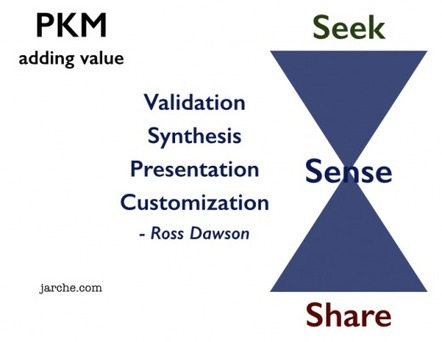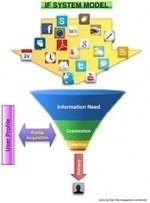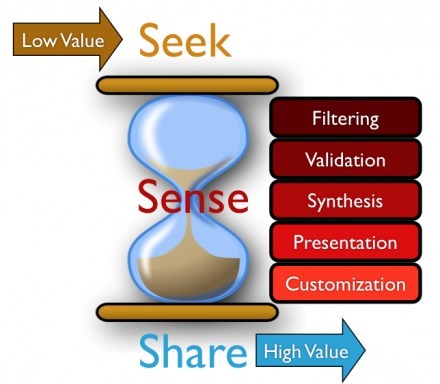
|
Scooped by Robin Good |
According to Harold Jarche, knowledge is an emergent property of all sense-making activities.
Curation and PKM (personal knowledge management) have the same objective: helping oneself and others gain more understanding about whatever we are interested in. The only difference between the two is that curation devotes itself to satisfy the knowledge needs of an audience while the second addresses these at a personal level.
But what are sense-making activites about?
Harold Jarche draws on Ross Dawson's five ways of adding value to information as well as on Nancy Dixon examination Rob Cross and Lee Sproull examination of tacit knowledge sharing practices inside large organizations to identify at least eight individual approaches to sense-making or adding more value to existing information.
These include:
- Validating
- Synthesizing
- Presenting
- Customizing
- Answering
- Meta-informing
- Reformulating
- Legitimizingto which I would personally add:
- Comparing
- Finding related items
- Illustrating - Visualizing
- Evaluating
- Crediting and attributing
It is indeed around identifying and becoming aware of these specific aspects of our sense-making activities that we can improve and augment our capability to learn and to effectively curate information for others.
Thoughtful. Inspiring. 8/10
Original post: http://www.jarche.com/2013/10/pushing-and-pulling-tacit-knowledge/



 Your new post is loading...
Your new post is loading...













This is definately something that anyone in the coming new century needs to learn how to do effectively. Do we want regurgitation or depth of learning from knowledge gained? I value, for example, how Scoop.it allows for the 'web interface' to be looked after, by them ,and the curation and learning happens with us!
Thanks for sharing this Robin Good!
Robin's insights always bring content to the next level!
Article lists a range of ways to use sense-making to add value to curated content.